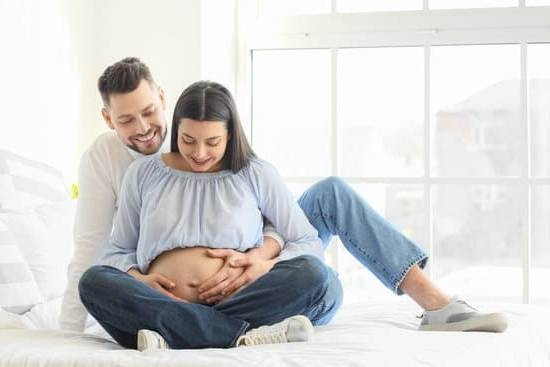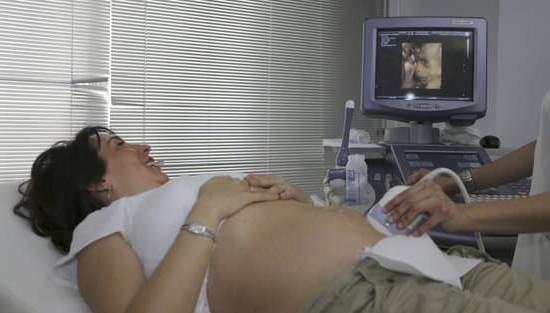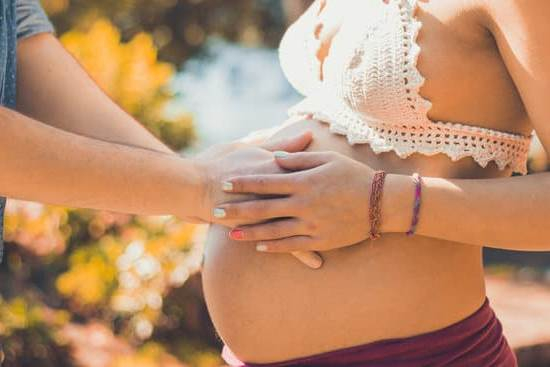Introduction
Women often experience one or many symptoms during early pregnancy, part of which is cramping. Cramping during pregnancy can happen to some women as early as 4-5 weeks into their gestation period, but the intensity and occurrence of this symptom differs from one person to another.
The earliest possible sign of pregnancy can depend upon whether the woman ovulates each month or not. In women with regular menstrual cycles, the very first indicator is usually a missed period. During this time there might be some amount of cramping, but this symptom may occur irregularly and could be mild for some women and different for other women – further explanation below.
Cramping is directly linked to ovarian action that occurs when an egg is released from the ovary in order to become fertilized. This process can cause some cramping that ranges from mild discomfort to more intense discomfort depending on the individual woman and her uterus size. Most women report that menstrual-type cramps are felt soon after a positive pregnancy test result – usually occurring several days before they would expect their next menstrual cycle onset date.
Additionally, enlargement and stretching of the tissue around the expanding uterus can also lead to sensation of cramps throughout the entire first trimester of pregnancy which may be sharp or dull pains in the abdomen resembling menstrual periods pain sensations. It’s critical however to also recognize other serious abdominal conditions such as kidney stones, appendicitis, ectopic pregnancy etc. Therefore any severeabdominal/pelvic pain needs to be imperative considered serious medical situation and please seek immediate medical advice from your practitioner if you experiencing such symptoms .
Causes of Early Pregnancy Cramping
Cramping during early pregnancy may start as early as the first week or two after conception. It is usually a sign that the uterus is growing and changing to accommodate a growing fetus. As the uterus begins to enlarge in size, it stretches the ligaments and muscles that support it. During this stretching, some women experience mild cramping or even dull backache pain as their body adjusts.
Common causes of cramps include:
• Implantation: When the fertilized egg attaches to the uterine wall, some light cramping can occur. This often happens around 6 to 12 days past ovulation and is sometimes accompanied by light spotting.
• Dehydration: Low fluid intake may result in painful muscle contractions known as dehydration cramps.
• Hormonal Changes: Rapid changes in hormone levels can cause mild menstrual-like pains regularly throughout pregnancy, particularly during the first trimester.
• Constipation/Gas Pains: As your digestive tract slows down due to higher progesterone levels, your stools can become larger, more difficult to pass and cause abdominal discomfort which may present itself in the form of cramping pain.
• Sex/Orgasm: Not only do pregnant women need lubricants when engaging in intercourse to reduce friction, their increased sensitivity can also lead to cramp-like sensations after orgasm if penetration becomes too deep.
Timing
For most pregnant women, cramps will begin in the first trimester. Most often, these cramps are a normal part of pregnancy as the uterus grows and stretches to accommodate the growing baby. These cramps may start as early as five or six weeks into a pregnancy and tend to be located in the lower abdominal area. They can vary in intensity from mild to strong and can last from several seconds to multiple minutes. Many women report that the cramping sensation is similar to menstrual cramps, but generally with less intensity. It is important for pregnant women to remember that any pain or cramping should be discussed with their healthcare provider so that it can be monitored and treated appropriately if needed.
Types of Cramping Experienced & Their Severity During Pregnancy
Cramping during pregnancy typically begins in the first trimester, though it can start as soon as a few weeks into conception. It tends to be more common and intense during the first 7-12 weeks of gestation, and lesser cramps experienced in the middle or later stages of pregnancy.
There are a variety of types of cramps that can occur during pregnancy, including round ligament pain, Braxton Hicks contractions (false labor pains), and menstrual-like cramps. Round ligament pain is often described as sharp “poking” sensations around the lower abdomen, which generally occur when getting up or out of a chair too quickly. Braxton Hicks contractions might feel like mild pressure in the lower abdomen and pelvic area that comes and goes without increasing in intensity. And menstrual-like cramps tend to cause constant low aches that may worsen with movement or walking around.
In terms of severity, round ligament pain usually lasts a few minutes at most before dissipating while Braxton Hicks contractions tend to be very mild and short-lived. Menstrual-like cramps are often times the most severe though can often be managed by a warm bath or taking acetaminophen (Tylenol). It is important for pregnant women to always check with their healthcare provider if they have any questions about any painful or consistent unpleasant symptoms they may experience during pregnancy.
Evaluation
Cramping is a common occurrence during early pregnancy. It usually begins when the uterus starts to expand in size to accommodate the growing fetus. Cramping can start as soon as two weeks into pregnancy, although the intensity typically starts increasing around week six and into week eight of a woman’s pregnancy. Early cramping is typically only slight discomfort, most often felt in the lower abdomen and groin area, but it can also be felt in other areas of your body such as legs or hips.
Evaluating what constitutes normal vs abnormal cramping during early pregnancy is important for expecting mothers. When evaluating cramping, you should take note of its duration, magnitude, location and frequency. Normal cramps will often come on with activity or if you stand for long periods time and then abate once the activity stops or you rest. Abnormal cramps are those accompanied by severe pain that doesn’t go away after rest or occur while resting; they last longer than ordinary twinges; and they might be concentrated in one spot too consistently. Other signs of possible complications include excessive bleeding and/or bright red blood-tinged fluid that smells bad. If you’re experiencing any of these issues along with some abdominal pain, it may be wise to contact your doctor right away for advice on how best to proceed given the situation at hand.
Treatment
Cramping can start as early as a few weeks into pregnancy and often continue until the end. While this cramping is generally considered to be normal and usually not a cause for concern, it is important to note that cramping may also be a sign of a possible complication. Therefore, if you experience any form of cramping throughout your pregnancy, you should contact your doctor or midwife for further evaluation.
Treatment for cramps during pregnancy vary from person to person depending on the severity of their discomfort. Generally speaking, milder forms of cramping can typically be relieved by warm baths or showers, light exercise, stretching, and changing positions. Drinking plenty of fluids and elevating your feet can also help ease the discomfort related to these types of cramps. If needed, speak with your doctor about taking over-the-counter medications such as ibuprofen or Tylenol to lessen any pain you may experience due to more severe types of cramps. Additionally, certain natural remedies such as lavender oils have been used to help reduce physical discomfort during pregnancy in general. However, it is highly recommended that you consult with a medical professional before using any natural remedies during this time since some herbs or essential oils may actually be harmful to an unborn baby’s health.
Red Flags
Cramping during pregnancy can be normal and is usually not a cause for concern. Generally speaking, cramping during the first trimester of pregnancy starts between 5 and 8 weeks. Most women experience mild to moderate cramps or contractions that either remain constant or come and go. These may feel like period cramps and are often accompanied by nausea, fatigue and dizziness.
However, there are certain red flags that may indicate a problem with your pregnancy that should be talked to your doctor about immediately. These include abdominal/back pain that doesn’t subside after rest; severe bleeding; spotting or discharge along with the cramping – especially if it has an odor; increasing severe pain located on just one side of the abdomen; fever, chills, or flu-like symptoms; soak through more than one pad in hour; heavy fluid loss with clots. If any or all of these symptoms accompany your early pregnancy cramps, it is best to seek medical attention immediately in order to rule out any underlying issues.
Tips & Advice
Cramping in early pregnancy can start within the first few weeks of conception. This is not necessarily an indication of something being wrong with your pregnancy; it is often part of the normal process of implantation. Implantation cramps often resemble period pains, but are usually less intense and will only last 1 to 3 days. To help relieve this type of cramping in early pregnancy, try taking a warm bath or doing some gentle stretches and yoga postures. You should also drink plenty of fluids to help keep your body hydrated and make sure that you get plenty of rest when possible. Additionally, make sure you check with your doctor if the cramps become very painful or don’t seem related to anything else going on in your body.
Takeaway
1. Cramping may begin as early as a few weeks into pregnancy, when the uterus starts preparing for implantation of the embryo.
2. Cramping can range from mild and temporary to severe or recurring pain.
3. Early cramps can be caused by a variety of factors, including hormonal changes, stretching of tissues, or an infection.
4. It is important to contact your healthcare provider if cramping is intense or causes significant discomfort; they will be able to diagnose the cause and provide advice on how to manage it.

Welcome to my fertility blog. This is a space where I will be sharing my experiences as I navigate through the world of fertility treatments, as well as provide information and resources about fertility and pregnancy.





